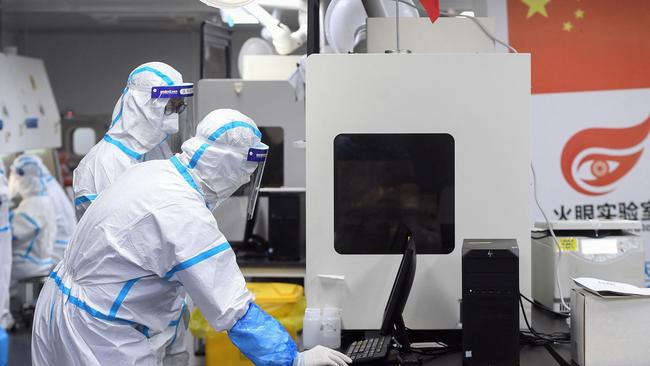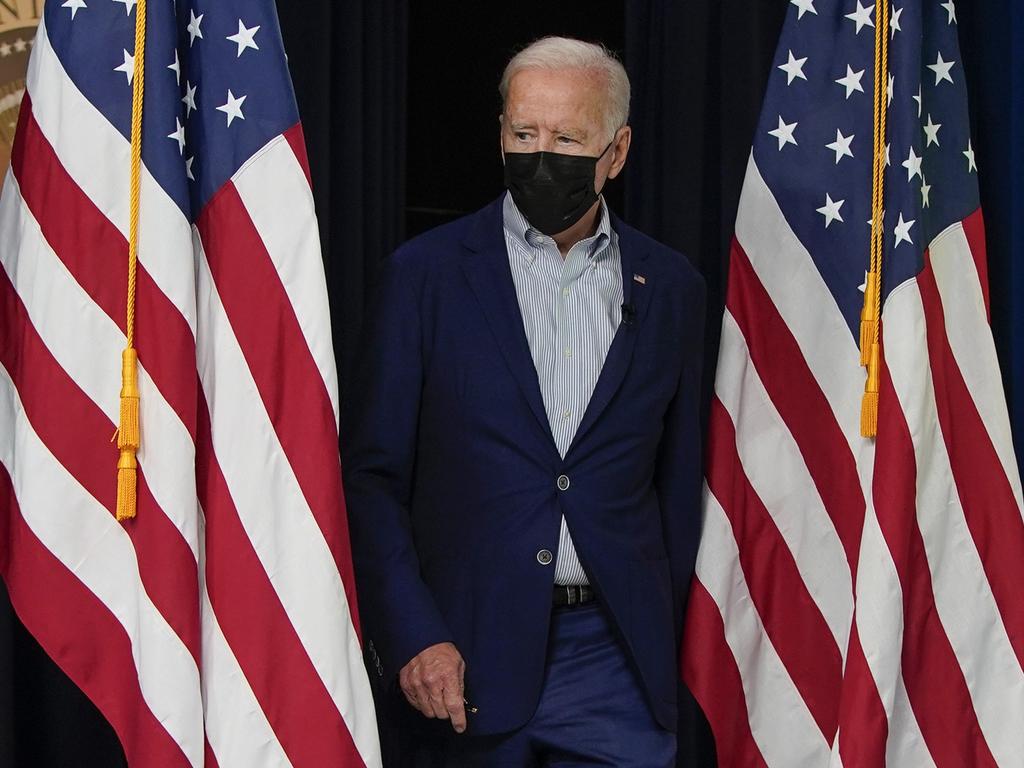Covid-19: US suspicious of Wuhan lab for years
America’s top-secret intelligence agency had been concerned about the activities at Wuhan Institute of Virology since five years before the pandemic.

America’s top-secret intelligence agency had been concerned about the chemical and biological activities at the Wuhan Institute of Virology since five years before the Covid-19 pandemic.
Former director of the National Security Agency Mike Rogers, appointed under president Barack Obama, has revealed there were concerns about the Wuhan Institute of Virology during his time at the helm of the agency from 2014 to 2018.
His remarks, featured in the soon-to-be-released book, What Really Happened in Wuhan, are supported by former secretary of state and CIA director Mike Pompeo, who said the US government was familiar with the Wuhan laboratories, and their biological risks and safety concerns, when the pandemic hit.
“Of course we knew the history of the lab because there had been Western connections to it,” Mr Pompeo says in the book. “We knew a great deal about the laboratory. The French built it, designed it, we had provided scientists there that had partnered with them on research so we knew a good deal about what was taking place.
WHAT REALLY HAPPENED IN WUHAN: READ THE BOOK EXTRACT
“And so it didn’t take us long after January (2020) before we had as a working hypothesis this possibility (of a lab leak).”
Mr Rogers, a highly decorated former US Navy admiral, served as director of the NSA, which specialises in signals intelligence, from 2014, when Obama was president, through to 2018, under president Donald Trump.
He was also a member of the military’s Joint Staff, the most senior uniformed leaders within the Department of Defence, during the first stage of the Iraq War.
“There’s always a concern about biological and chemical activities,” Mr Rogers said. “This is an area, from an intelligence perspective and a national security perspective, we pay attention to and we put resources together to try to understand. It’s one reason why you saw the cables coming out of the embassy in Beijing. It’s an area we very much publicly acknowledge we’re concerned about and pay attention to.”
What Really Happened in Wuhan also details how senior Morrison government officials were puzzled over the Trump administration’s early dismissal of the coronavirus as a hoax or akin to the flu, appearing to ignore intelligence that a global pandemic could unfold.
Former Australian ambassador to the US Joe Hockey advised Trump’s then chief of staff, Mick Mulvaney, and deputy chief of staff Chris Liddell in March 2020 that Americans should start to wear masks, as the virus began to spread within the US.
He gave the advice at a private Washington dinner party, detailed in the first extract of the book in The Weekend Australian’s Inquirer section. But he was shouted down and told masks were “useless” and Covid-19 was nothing more than a “mild flu”.
Mr Hockey reveals the senior officials were also concerned about the virus “potentially undermining Mr Trump’s re-election strategy”.

He wondered whether the same intelligence that warned Australia about the potential global pandemic was reaching the president’s top advisers.
Defence Minister Peter Dutton, who visited the US in early March 2020, was similarly perplexed. “There was a belief that this wasn’t going to hit their shores at that point in time,” he said. “Australia had seen the intelligence. The predictions for us at that point were fairly dire. The initial advice to us was quite confronting, that we were going to run out of capacity within ICUs [intensive care units].”
Other senior White House officials were highly concerned about the dismissive attitude the president and his team were taking in order to avoid an economic collapse sparked by panic.
The book reveals that health secretary Alex Azar implored the president and his advisers to stop downplaying the virus.
Mr Azar was furious after Mr Trump assured Americans on January 22, 2020 in a television interview: “We have it totally under control. It’s one person coming in from China, and we have it under control. It’s going to be just fine.”
The book describes how Mr Azar begged the president directly not to send a tweet praising Chinese President Xi Jinping for his co-operation and transparency, when in fact Beijing was blocking American and World Health Organisation officials from visiting Wuhan.
When his pleas to Mr Trump were ignored, Mr Azar stormed out of the Oval Office and appealed to national security adviser Robert O’Brien to intervene.
The investigative book also features interviews with Chinese whistleblowers and first-hand accounts of doctors in Wuhan, and delves into the unusual and suspicious activity inside the Wuhan Institute of Virology in late 2019.
Mr Pompeo reveals in the book he first questioned whether the virus leaked from a laboratory when Beijing blocked access to early virus samples and other epidemiological data that could help develop a vaccine and therapeutics.
“We began to look for alternative ways [it started] and everybody heard the wet market bat story, the pangolin story and you saw scientists saying this couldn’t have been man-made because we’ve looked at this thing, which was a bit of a straw man,” he says.
If you take the laboratory leak as a premise, Mr Rogers says, it is likely a worker was infected.
“If you accept the origin was the lab, the most common scenario I’ve heard speculated, and we don’t have definitive proof, is an employee in the lab inadvertently becomes infected, who then in the course of interaction with the market comes into contact and the disease ends up shifting from the individual,” he says.
“I don’t think we definitely know who patient zero is. The key to this always is finding patient zero. You’re always trying to get to the point of origin. I don’t think there’s agreement that we’ve identified patient zero yet.”
What Really Happened in Wuhan by Sharri Markson is published worldwide on September 29. Available by pre-order from Booktopia.








To join the conversation, please log in. Don't have an account? Register
Join the conversation, you are commenting as Logout